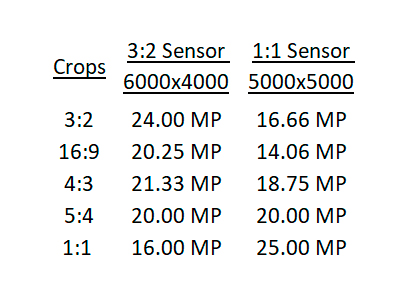Tom_N
Forum Pro
That puts us back to oversized sensors that contain the image circle. I'm not sure that there is a need for them, but there is a twist that nobody has mentioned here yet. In a previous thread, someone mentioned hexagonal sensors. Their supposed advantages:From a practical standpoint, if the sensor is contained in the image circle, the best aspect ratio is the one that matches your final print. That's the only solution where the corners of the image map to the edge of the image circle.
1. Unlike circular sensors, hexagonal sensors can support packed ("honeycomb") wafer layouts. (This might be an illusory savings. You'd be trading unused silicon wafer space for using some of your wafer space to manufacture unusable photosites.)
2. Oversized hexagonal sensors would waste less area than oversized square sensors. A circle can take up at most 78.5% of the area of an square but could take up 90.6% of the area of a hexagon. (Neither figure counts waste due to using part of the image circle.)




